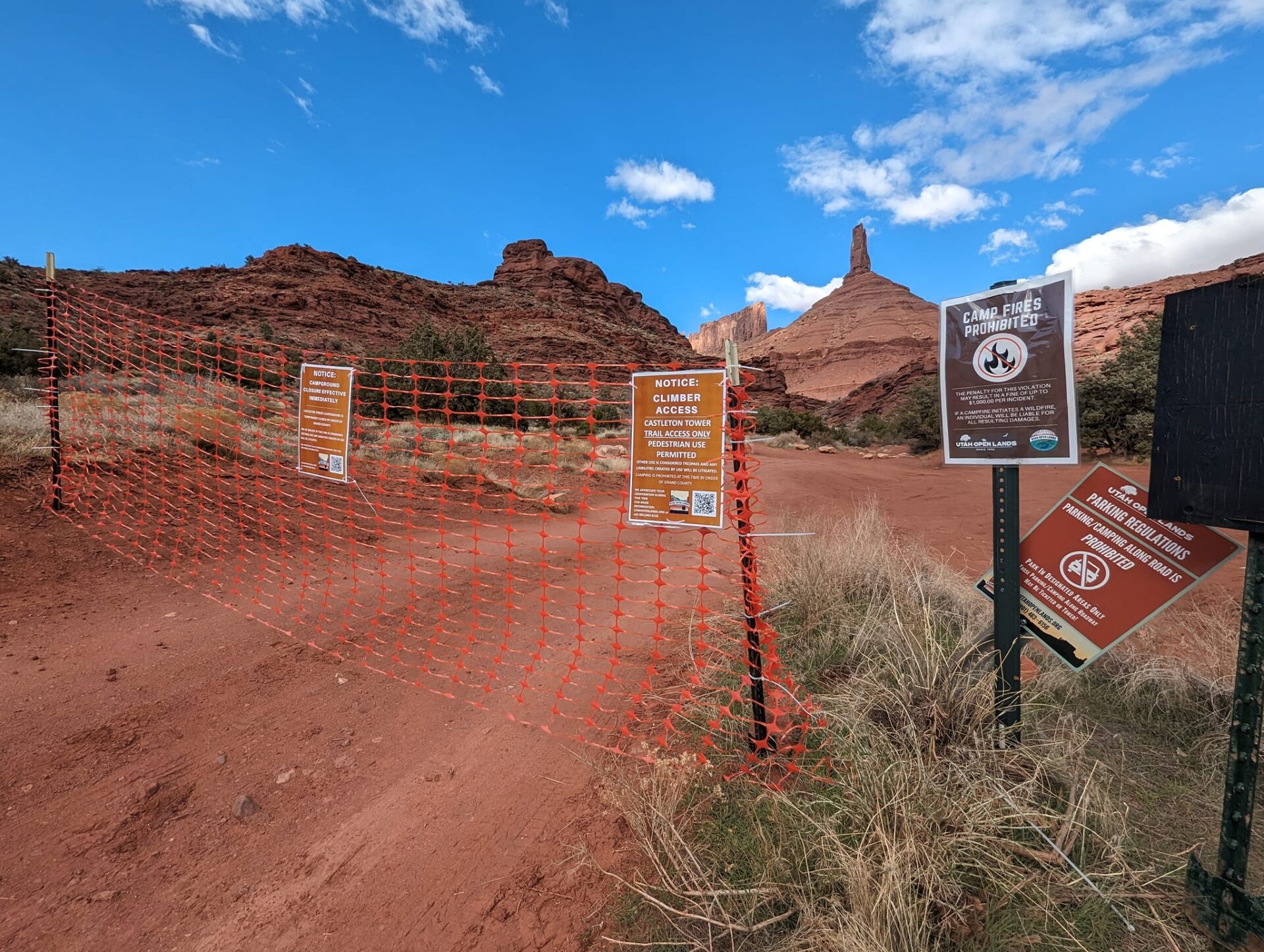Moab resident Carrie Bailey said she doesn’t usually go to public meetings, but the April 30 Moab Area Land Use public workshop piqued her interest — and the interest of dozens of other people who showed up at the Grand Center.
“I just came to listen and to see the bigger picture of how people felt,” Bailey said at the conclusion of the meeting. “I was more interested in what the dynamics of everything are and how, because I didn’t know how different people felt, really, and so it was A to Z on that and all the different kinds of ideas.”
Five land use options were presented at the workshop, ranging from option one, allowing land use to continue as it is with the “Status Quo,” to option five, “No Growth,” on any new overnight lodging uses.
The public feedback is helping to guide decision-making in the City of Moab and Grand County to create “a unified land use plan that reflects the vision of Grand County and Moab’s residents and meets the needs of our changing community,” according to a brochure handed out at the workshop. The challenge is to create land use policies that will take effect on new overnight lodging once the 180-day moratorium on new development expires in August.
To garner feedback on the five land use options, participants were sorted into six small groups.
As the small groups each began their own discussions on the possible options, the participants found areas of agreement and disagreement on land use planning. As the discussions continued, the groups distilled the five options into focusing on one or two of the most favorable options on the table.
Several people in each group appeared to focus on option three, “Focused Growth, Determined by Area,” and option four, “Controlled Growth.” But a commercial overlay zone north of Moab concerned people in more than one group, who said they don’t want to see denser commercial growth north of town leading to the Colorado River bridge. Traffic was cited as a leading concern on denser commercial growth.
Grand County Community and Economic Development Department Director Zacharia Levine listened to public comments and answered questions about land use for one of the six groups.
“Are you OK with hotel development if traffic is mitigated?” he asked, to which one person in the group rhetorically asked, “Why do we need more hotels?”
Answering a question about how many new hotel rooms are currently being built (under permits that were issued before the moratorium took effect), Levine said that about 1,200 new overnight lodging rooms “are vested but not yet completed.”
At the end of an hour-long discussion, a person from each group stood to present their group’s overall thoughts and feelings. Two groups reported that water rights and water availability for future growth are their main concerns in the decision-making process around governing land use. One group member said it depends on the water study that has not yet been made publicly available by the U.S. Geological Survey (USGS).
One person pointed out that the five options being presented do not include any data to help make decisions, and they asked for information about how many additional overnight lodging rooms would be able to be developed within each of the five different options being presented, and how much water those different options would require.
Landmark Design Principal Mark Vlasic led the Moab Area Land Use workshop, and he said it’s uncertain, as there would be many variables to consider within the options, but Levine spoke up and assured the audience that that information would be made available.
Marc Stilson, the regional engineer at the Utah Division of Water Rights based in Price, met with the Moab Sun News on April 25 to discuss water in the Moab area.
Stilson had a copy of the final draft of the USGS water report. When the water report is publicly released there will be a public meeting “hopefully this year” in the summer or fall, he said. He said that a delay in releasing the final report is due in part to two lead scientists leaving to go work on other assignments in Washington, D.C., and Nevada.
Stilson said the report gauges surface and groundwater and will help create a groundwater management plan for the Moab area that will “prevent mining of the groundwater — overdrafting — so we don’t overuse.”
Stilson said the water availability and use shared by the USGS in its final report is expected to be about the same as it is described in the final draft. Stilson explained that he sent this data from the final draft in a public document that he compiled and sent to the Grand County Planning Commission on March 12. This public document shows the USGS river gages and preliminary data on groundwater availability. The preliminary groundwater availability in the valley shows a minimum of 7,200-acre-feet and a maximum of 11,800-acre-feet. Moab is using about 2,000-acre-feet, and has water rights to about 10,000-acre-feet.
Back at the meeting at the Grand Center, not all participants were quick to settle on option three or option four.
As a business owner, JJ Wang said, “Yes, we are concerned with what’s happening.”
He and his friend, Brian Ballard, said they feel option two, “Allow Growth With Increased Form & Performance Requirements” is the most reasonable. Neither man was in favor of option one, “Status Quo,” or option five, “No Growth.”
“I think that’s an irresponsible thing to be to just let it go haywire,” Ballard said.
To see these options and all of the documents presented at the workshop, visit www.moabarealanduse.com and click on “Public Workshop – Presentation.” Public comments are still being accepted and can be emailed to moab@ldi-ut.com.
Public participates in workshop designed to guide decision-making on growth in the Moab area
“Are you OK with hotel development if traffic is mitigated?”




